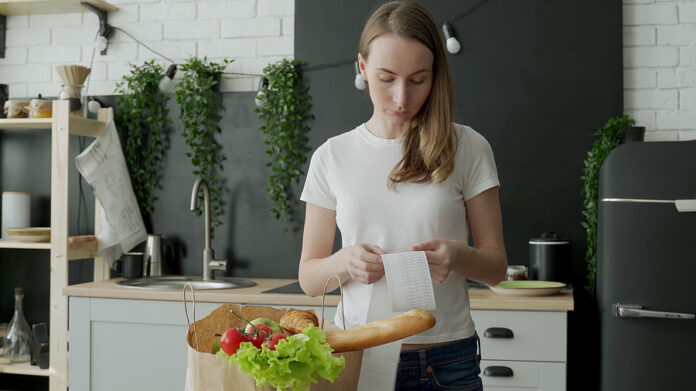
By Steve Zurek, Vice President, Thought Leadership, at NIQ – a leading consumer intelligence company
After more than three years in effect, the COVID-19 U.S. Federal Student Loan Forbearance program is slated to end on September 1. The program, created in response to the anticipated financial stress of the pandemic, ensured borrowers who were not on income-based repayment plans could forego payments until the program ended. Those on income-based repayment plans had their payments lowered.
During this time, federal student loan forbearance provided much-needed relief for consumers amid the uncertainty of the pandemic. However, with the program set to end, borrowers face more than resumed payments as they find themselves in a new economic environment that may impact their personal finances, and in turn, spending.
Since the program began in April 2020, inflation has eroded shoppers’ purchasing power. Over the past three years, CPG inflation has pushed consumers to spend 34%1 more on goods. In Q2 2023, the average unit price of food increased 7%2, according to recent data from NIQ. Further, many consumers adjusted their finances upward in the absence of loan payments.
Now, as student loan forbearance ends, the food retail industry will be among many tasked with adapting as consumers rethink their budgets and keep an even closer eye on spending.
Understanding the relationship between CPG spend and student loan debt in America
The potential impact of resumed student loan payments on the CPG industry, including the food sector, is profound. Data show the average monthly student loan payment for millennials is $265 per month, worth about 49% of millennials’ average CPG spend per month ($542)3. Student loan payments for Gen Z, who are on track to outpace the student loan debt of millennials, represent nearly 60% of their average monthly CPG spend3. This debt represents the value of between 6.4 and 7.2 CPG shopping trips across generations, with Gen Z ranking the highest at 7.2 trips3.
Beyond day-to-day spending, the impact of student loan debt is far-reaching. In fact, both millennials and Gen Z are delaying events that drive greater purchases, like buying a house, having children, and buying/leasing a car. This leaves the industry asking: How can we appeal to financially stressed shoppers when baskets are shrinking, and consumers seek affordability?
Strategies to adapt to a post-forbearance world
In today’s environment, consumers are looking for value while also cutting back on non-essential purchases. It is critical to carefully examine pricing and promotion strategies, balancing sales with margins while offering value in an attractive price pack architecture for shoppers.
The food industry is particularly interesting given the number of high-velocity categories, like soft drinks and salty snacks, that can be more promotionally driven. However, in a post-pandemic world, this industry requires fresh thinking around the frequency and depth of discounts in a shift away from the “race to the bottom” phenomenon that often drove broader retail pricing prior to 2020. Strategic pricing and promotions are the new imperatives to achieve long-term results.
While the ability to lean into impulse purchasing has declined, price elasticity is one of the most critical components in strategically setting the right price and developing a strong promotion strategy. Understanding the impact of elasticity is becoming a more dominant competitive differentiator for brands as well. As consumers revisit their budgets, we expect pricing will be one of the greatest factors in a purchasing decision. However, brands will also need to provide unique value – beyond price – offering the right product at the right place to stand out.
Whether through innovation, uncovering promotion whitespace, or online convenience, brands will need to get creative to attract and retain shoppers in a competitive environment where consumers crave best-in-class experiences across and between channels.
Leveraging technology to remain competitive
Adapting and innovating is always easier said than done. At today’s pace, it can be difficult to know where to start. That’s why on the path forward, data-driven insights will be essential to formulating effective strategies to grow sales and maintain margins. From pricing and promotion that can promote brand loyalty to display and marketing strategies, data are now available at our fingertips to help better understand consumers and their needs based on the unique environment they’re in today. Advanced analytics can also create digestible models to help determine key factors, like price elasticity. In the latest normal, brands that invest in turning data into actionable insights will succeed and ultimately overcome even the most complex challenges to reach consumers today.
 Steve Zurek is a CPG industry veteran with 32 years of experience in sales and category development, now serving as Vice President, Thought Leadership, at NIQ. He is responsible for thought leadership, focusing on the future of CPG and integrating a client-side perspective into the NIQ Specialty Sales processes.
Steve Zurek is a CPG industry veteran with 32 years of experience in sales and category development, now serving as Vice President, Thought Leadership, at NIQ. He is responsible for thought leadership, focusing on the future of CPG and integrating a client-side perspective into the NIQ Specialty Sales processes.
Sources:
- NielsenIQ, Total US xAOC, Annual Unit Price % Change YTD: 26 weeks to July 1, 2023
- NielsenIQ, Total US xAOC, Q2’23: 13 weeks ending July 1, 2023 Vol = Units
- NIQ Homescan & U.S. News and World Reports “What is The Average Student Loan Payment; March 10, 2023; Erika Giovanetti







